The Elder Scrolls Series: Evolution, Legacy, and the Road to TES VI
The Elder Scrolls series is a legendary RPG franchise renowned for open-world freedom and deep lore. Explore its history from Arena to Skyrim, including spin-offs and what's next for The Elder Scrolls VI. Discover how each game evolved, set industry standards, and shaped modern RPGs.
The Elder Scrolls is a legendary series of action/RPG games from Bethesda Game Studios, renowned for its open-world freedom and immersive exploration. Players can roam the vast fantasy world of Tamriel, choosing where to go and which quests to undertake, embodying the motto "be whoever you want, do whatever you want." The first game, The Elder Scrolls: Arena, debuted in 1994, launching one of the most iconic and successful RPG franchises in gaming history. The series currently includes five main single-player titles (Arena, Daggerfall, Morrowind, Oblivion, Skyrim), several spin-offs, and the MMORPG The Elder Scrolls Online. On the horizon, fans eagerly await the highly anticipated sixth installment-The Elder Scrolls VI.
The Evolution of The Elder Scrolls Series
Each entry in The Elder Scrolls series introduced new gameplay mechanics, technological advancements, and storytelling innovations. Below, we highlight the key features, gameplay evolution, graphics, and narrative developments of each main game from Arena to Skyrim, as well as their impact on the RPG genre. We'll also touch on online and mobile spin-offs-TES Online and TES: Blades-and examine the expectations and confirmed facts about The Elder Scrolls VI.
The Elder Scrolls: Arena (1994)
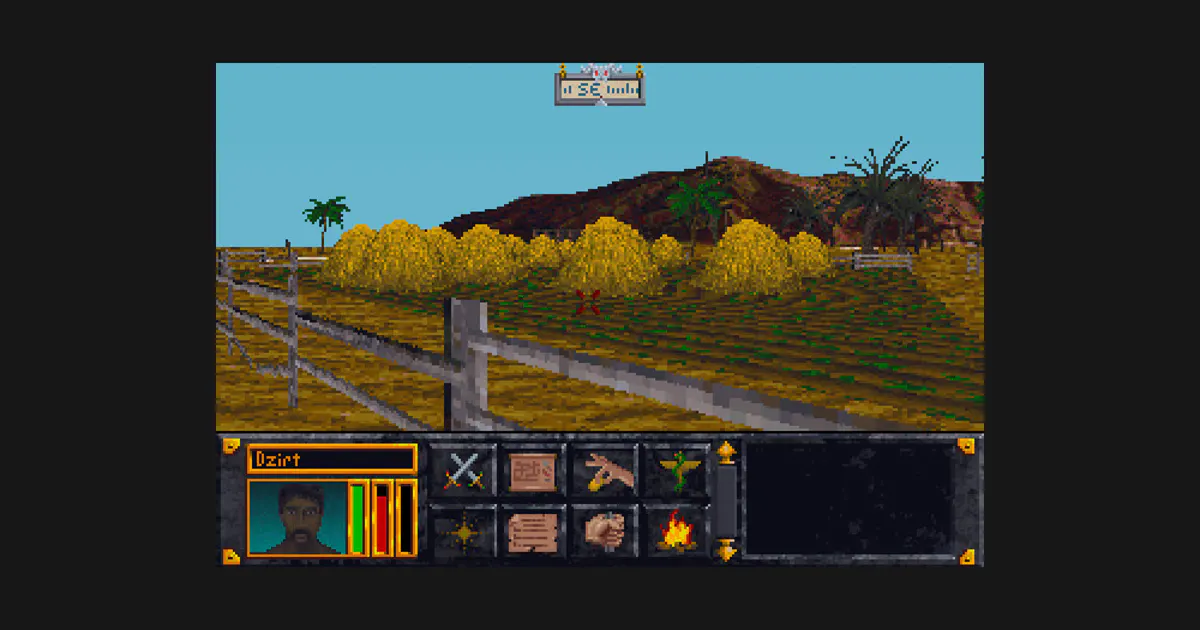
The Elder Scrolls: Arena was released on March 25, 1994, for MS-DOS. Initially envisioned as a fantasy arena fighting game, it transformed during development into a full-scale open-world RPG. Set on the continent of Tamriel under Imperial rule, the story follows a hero collecting pieces of the legendary Staff of Chaos to defeat the usurper, the battlemage Jagar Tharn, who has seized the throne. Players explore all provinces of Tamriel, navigating dangerous dungeons, battling monsters, and solving puzzles.
Key features: Arena pioneered the open-world concept, offering a first-person perspective, day-night cycles, hundreds of cities and villages to explore, abundant side quests, and total freedom of movement without imposed moral boundaries. After escaping the starting prison, players could venture anywhere-a level of nonlinearity groundbreaking for 1994. However, technical hurdles lagged behind ambition: the change in concept caused delays, and the initial release was poorly tested, resulting in numerous bugs and a slow start in sales. Critics cited the world's repetitiveness and technical issues, earning Arena the reputation of a "cult classic full of bugs." Over time, positive press and end-of-year awards secured Arena's cult status as a revolutionary RPG, laying the foundation for what would become The Elder Scrolls' hallmarks-player choice, a vast world, and the iconic "prison escape" as an adventure's start.
The Elder Scrolls II: Daggerfall (1996)
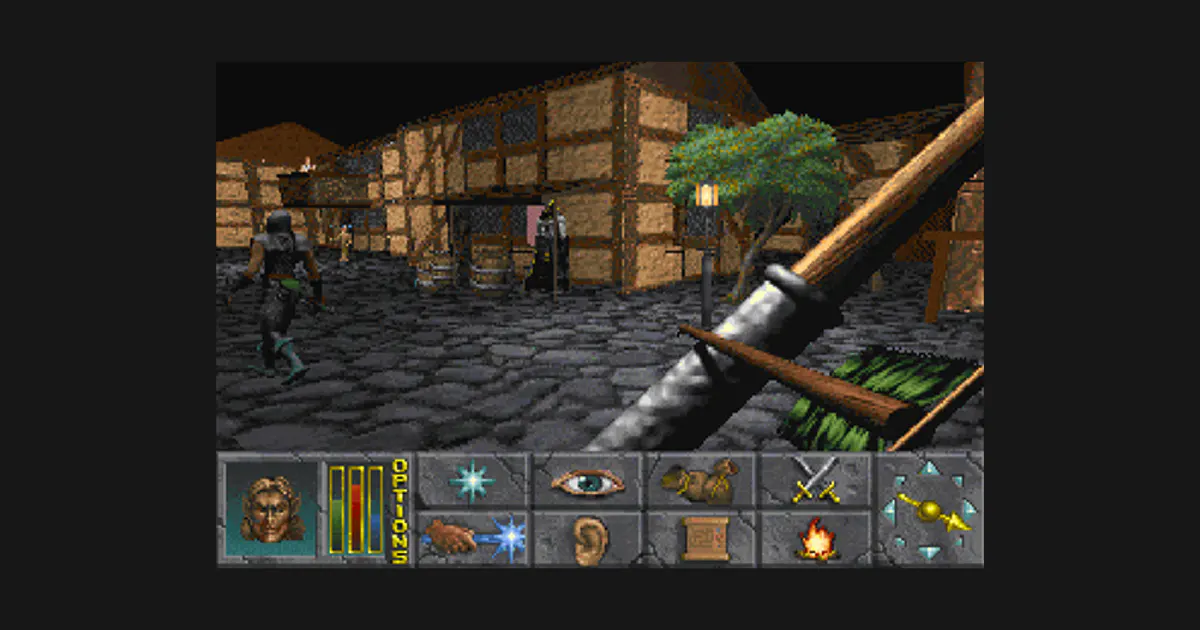
Released in 1996 for MS-DOS, The Elder Scrolls II: Daggerfall massively expanded the series' scale, becoming one of the most ambitious RPGs of its era. Set in the Iliac Bay region (provinces of High Rock and Hammerfell), the Emperor tasks the protagonist with investigating a murdered king's ghost and searching for the ancient Numidium golem. Daggerfall's story was notably nonlinear, offering multiple endings based on player choices and introducing the unique "Dragon Break" to unify all endings canonically.
Key features: Daggerfall boasts a colossal open world-about 160,000 square kilometers, roughly the size of Tunisia and twice as large as the UK-still the largest in TES history. Players can explore over 15,000 cities, towns, and dungeons, inhabited by approximately 750,000 NPCs (compared to around 1,000 in later Morrowind or Oblivion). This unprecedented scale was achieved through procedural generation. Daggerfall also introduced a deep role-playing system: skills improved through use, custom class creation, and adjustable strengths and weaknesses. For the first time, features like horseback riding, lycanthropy (becoming a werewolf), and variable faction reputation appeared. The enhanced XnGine engine delivered pseudo-3D VGA graphics, smooth movement, day-night cycles, and weather effects, creating a more dynamic world.
Despite its groundbreaking ideas, Daggerfall was hampered by technical issues and high system requirements. Fans nicknamed it "Buggerfall" due to its notorious bugs. Still, Daggerfall was commercially successful and solidified the series' reputation, showcasing the potential of massive RPG worlds. Fan support continued for years, with unofficial patches and the later Daggerfall Unity project bringing the game to modern systems. Daggerfall's legacy lies in demonstrating the vast potential of open worlds. However, Bethesda learned from the drawbacks, choosing to prioritize handcrafted quality over sheer size in future installments. Todd Howard himself noted that Morrowind's map is only ~0.01% the size of Daggerfall's, but every settlement and dungeon is unique, avoiding the monotony of procedural worlds.
The Elder Scrolls III: Morrowind (2002)
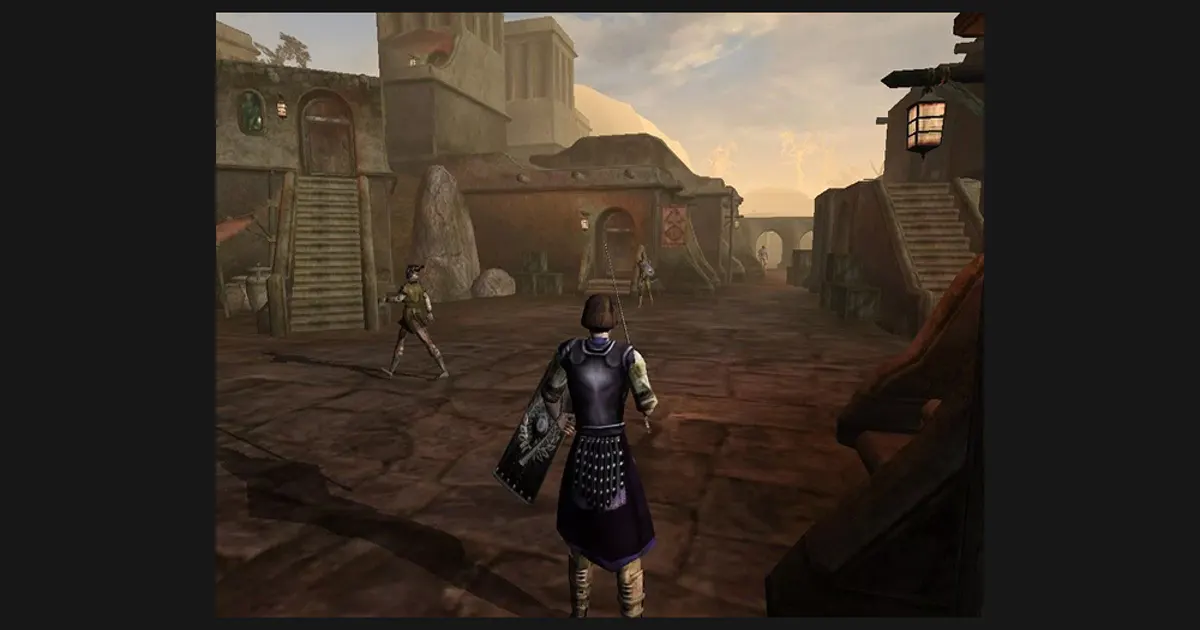
The Elder Scrolls III: Morrowind marked a major leap for the series in 2002, releasing on PC and, for the first time, on console (Xbox). Morrowind transports players to the province of Morrowind, on the volcanic island of Vvardenfell-homeland of the Dunmer (dark elves) and capital Vivec. Unlike the traditional European fantasy locales of earlier games, Morrowind's world dazzled with its exotic, original setting-giant mushroom trees, ash wastes, ancient Dwemer ruins, and cultural influences from the Middle East, East Asia, steampunk, and modernism. This unique atmosphere set Morrowind apart from other fantasy RPGs of the time.
Story and gameplay: The plot centers on the prophecy of the Nerevarine's reincarnation. The player, an outsider pardoned from prison, gradually uncovers their destiny while joining various guilds and factions. The main antagonist is Dagoth Ur-a powerful deity hidden within Red Mountain, seeking to free Morrowind from Imperial control. Morrowind emphasized deep world immersion: countless books, unique quests, and characters with fleshed-out dialogue. Unlike Daggerfall's procedural generation, all locations were handcrafted, giving every cave, city, and tomb distinct design and lore. The world was smaller, but dense with detail and unique content. Combat and RPG mechanics preserved the series' foundations-skill-based progression, classes, and attributes-while becoming more accessible. Early combat could be tough (many attacks "missed" due to low skills), and there were no quest markers, encouraging players to read journals and navigate by descriptions-making gameplay more hardcore by today's standards.
Impact and success: Morrowind received critical acclaim and commercial success, selling over 4 million copies by 2005-an impressive feat for what was once a niche series. The game won over 60 awards, including multiple "Game of the Year" titles. Two major expansions-Tribunal (2002) and Bloodmoon (2003)-added new regions and storylines. The Game of the Year Edition bundled the full trilogy. Morrowind also introduced the official Construction Set modding toolkit for PC, sparking one of the most active modding communities in gaming. Players created thousands of mods, from graphics overhauls to new quests and lands. Thanks to modding, Morrowind remained vibrant for years, inspiring ambitious projects like OpenMW (engine rewrite) and Skywind (Morrowind remade in Skyrim's engine). Morrowind cemented The Elder Scrolls as a leading RPG series, proving that deep lore and open-world design could win over a mass audience without oversimplifying gameplay. Many fans fondly recall Morrowind's atmosphere and freedom, and its success paved the way for an even broader sequel.
The Elder Scrolls IV: Oblivion (2006)
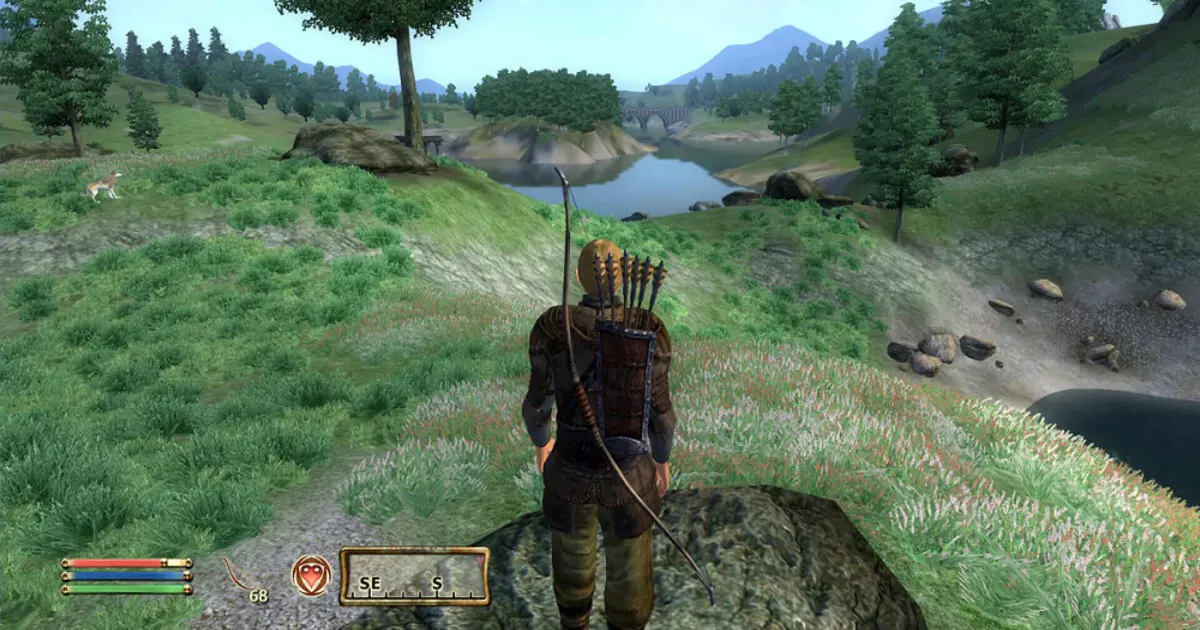
Released in March 2006 for PC and Xbox 360 (and in 2007 for PS3), The Elder Scrolls IV: Oblivion brought the series into a new technical era and expanded its mainstream appeal. Set in Cyrodiil-the heart of the Empire, with the Imperial City as its capital-the game presented a more traditional fantasy kingdom (green forests and medieval castles), making it accessible to newcomers after the exotic Morrowind.
Story: Oblivion takes place six years after Morrowind. Emperor Uriel Septim VII is assassinated, and portals to the demonic realm of Oblivion begin appearing throughout Tamriel. The protagonist, narrowly escaping execution (again starting as a prisoner), is tasked by the dying emperor to find his lost heir. Joining forces with the heir and the Blades, players battle the Mythic Dawn cult intent on unleashing Daedric armies led by Mehrunes Dagon. The climax is an epic battle in the Imperial City and the closure of the final Oblivion gate.
Gameplay and technology: Oblivion marked a huge leap in graphics and technology, utilizing the Gamebryo engine, Havok physics, and Bethesda's own Radiant AI system. Radiant AI gave NPCs daily routines and simulated city life-residents ate, slept, worked, and reacted to player actions, making the world feel alive. For the first time, all NPC dialogue was fully voice-acted (including stars like Patrick Stewart and Sean Bean). The world, slightly larger than Morrowind (~41 km²; Skyrim is ~25-30 km²), used procedural generation for realistic landscapes, combined with handcrafted environments. RPG systems were simplified: some skills were merged or removed, and an auto-leveling system adjusted monster and loot difficulty to the player's level, sparking debate among fans. While this kept the challenge consistent, it sometimes broke immersion (e.g., bandits in Daedric armor). Oblivion improved accessibility with quest markers, fast travel, and a user-friendly interface.
Reception and influence: Oblivion was a huge critical and commercial hit, earning a 94/100 Metacritic score and multiple "Game of the Year 2006" awards. Its cutting-edge graphics, detailed world, and realistic NPC behavior were widely praised. Over 3 million copies sold in the first year, bringing TES to a wider audience. Major expansions-Knights of the Nine (2006) and Shivering Isles (2007)-added new stories and areas, alongside numerous smaller DLCs. Oblivion's success on Xbox 360 introduced console gamers to open-world RPGs. The game inspired countless developers and became a benchmark for large-scale RPGs. Modding thrived with the TES Construction Set, extending Oblivion's lifespan through fan-made content and improvements. Ultimately, Oblivion refined the formula perfected in the next installment.
The Elder Scrolls V: Skyrim (2011)
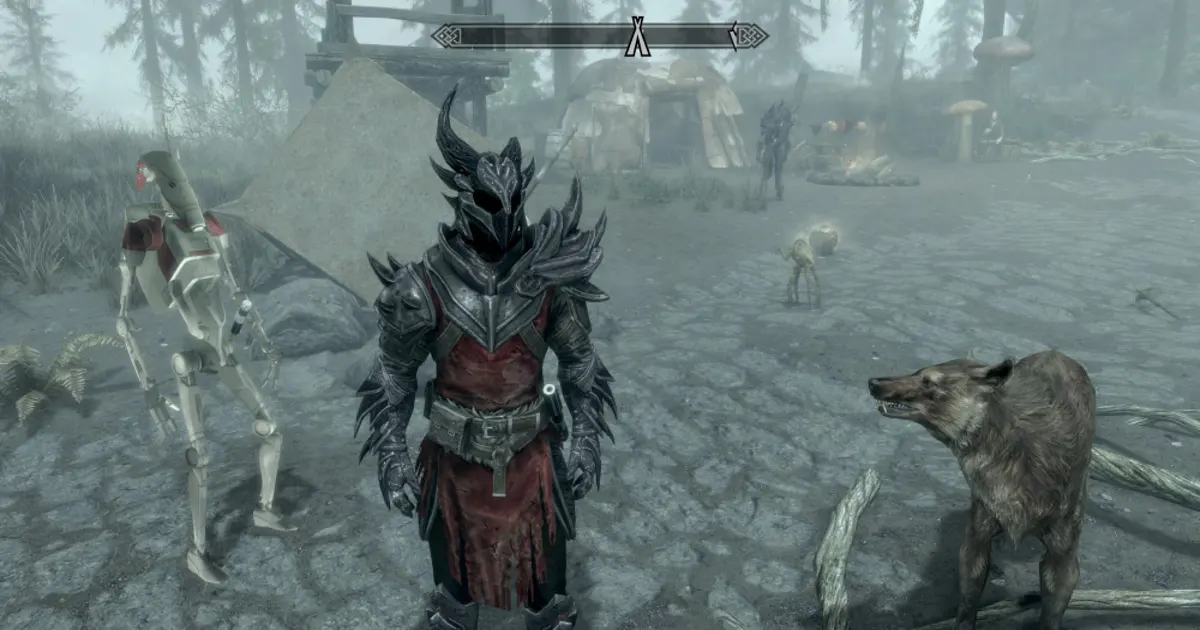
The Elder Scrolls V: Skyrim, released November 11, 2011, for PC, PlayStation 3, and Xbox 360, became the series' most famous entry. Set 200 years after Oblivion in the northern province of Skyrim-an icy land inspired by Norse culture and the Viking era-the region is embroiled in civil war between the Empire and Stormcloak rebels. Amidst this, the ancient threat of Alduin, the dragon prophesied as the World-Eater, returns to lead a dragon invasion. The protagonist-the Dragonborn, or Dovahkiin-is destined to stop Alduin, absorbing the souls of slain dragons. As tradition, the adventure begins with the hero as a prisoner, this time facing execution, only to be saved by a dragon attack.
Game features: Skyrim streamlined and polished TES's formula for mass appeal. Bethesda introduced the Creation Engine, delivering stunning visuals-snowy mountains, auroras, and realistic water. Combat became more dynamic, allowing dual-wielding weapons or spells, cinematic finishing moves, frequent dragon battles, and the signature "Dragon Shouts" (Thu'um) in the ancient dragon language, granting various powers. The RPG system was simplified: classic attributes and classes were removed; character progression was based solely on skill improvement, with perk trees adding unique abilities. This made builds more flexible and approachable for new players, though some fans missed the depth of Morrowind's systems. Skyrim also introduced the Radiant Story system, generating endless side quests for sustained engagement. The interface was revamped for console and PC usability, though some PC players felt it was too console-oriented.
Success and legacy: Skyrim became a phenomenon. It received numerous perfect scores and "Game of the Year 2011" honors. By 2014, over 20 million copies had sold; by 2016, over 30 million; and by 2023, the total exceeded 60 million, ranking Skyrim among the top-10 best-selling games of all time-an unprecedented feat for an RPG. Skyrim's influence spilled into pop culture: memes ("took an arrow to the knee"), NPC quotes, and the "Dragonborn" soundtrack became widely recognized. Bethesda re-released the game multiple times: Special Edition (2016), Nintendo Switch (2017), Anniversary Edition (2021), and even Skyrim VR. The ongoing re-releases became a meme, but also proof of sustained demand. The modding community, empowered by the Creation Kit, surpassed even Morrowind and Oblivion, creating tens of thousands of mods. Skyrim remains actively played and modded over a decade later.
Skyrim's impact on the industry is immense. It set new standards for open-world freedom; after 2011, many RPGs and action games aimed to offer similar scale and player agency-The Witcher 3 and Dragon Age: Inquisition, for example, were partly inspired by Skyrim. The game firmly established The Elder Scrolls as one of Bethesda's premier franchises, and millions of fans worldwide continue to await the next installment.
Spin-Offs: The Elder Scrolls Online and TES: Blades
Beyond the main single-player games, The Elder Scrolls universe expanded through notable spin-offs. Here, we focus on the major online and mobile adaptations.
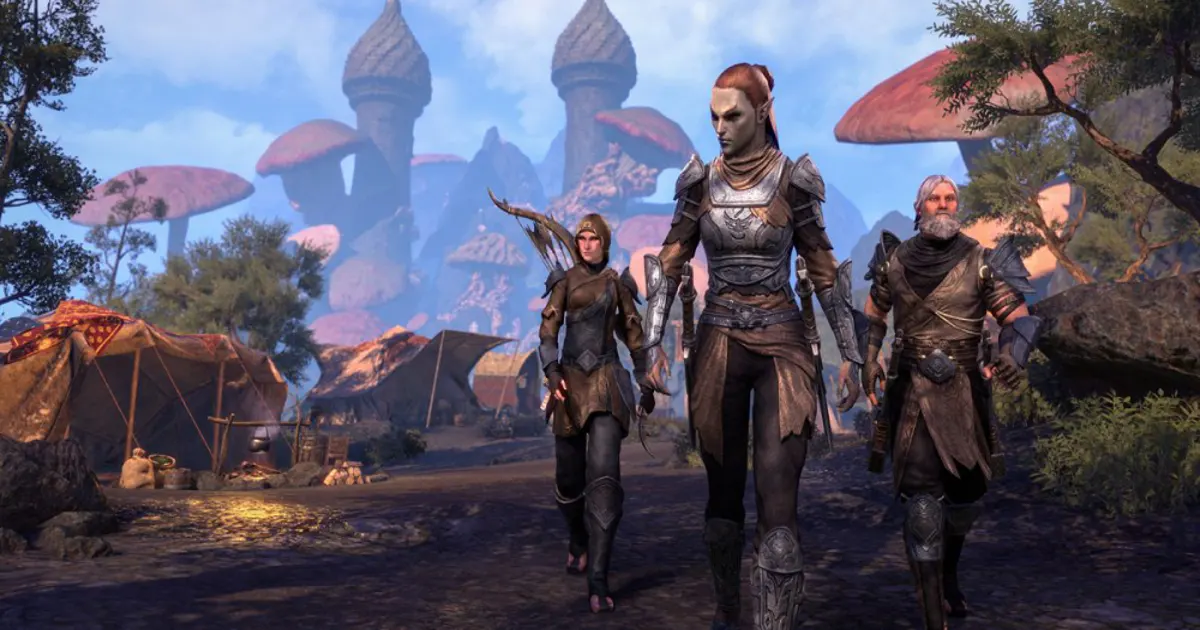
The Elder Scrolls Online (2014)
Developed by ZeniMax Online, The Elder Scrolls Online (ESO) launched in 2014 for PC/Mac and later for consoles. Set roughly 1,000 years before Skyrim during Tamriel's Second Era, players join one of three warring factions vying for the Imperial throne in Cyrodiil, while the Daedric Prince Molag Bal threatens to plunge the world into darkness. ESO initially used a subscription model and received mixed reviews, though its vast world and opportunity to visit various provinces were praised. In 2015, the game shifted to a buy-to-play model with Tamriel Unlimited, dropping subscriptions and focusing on expansions, which improved its reception.
Over time, ESO expanded with major chapters-Morrowind (2017), Summerset (2018), Elsweyr (2019), Greymoor (2020), and more-each adding new provinces or regions. The game now covers nearly all of Tamriel and receives regular updates. By 2019, ESO had over 13 million players; by 2023, about 22 million registrations. Critics note that ESO has become one of the best MMORPGs, offering rich TES lore in a cooperative setting. It won MMO of the Year from some outlets in 2014. Though its mechanics differ from single-player TES games, ESO continues the tradition of a vast open world, flexible character customization, and engaging storylines playable solo or with friends.
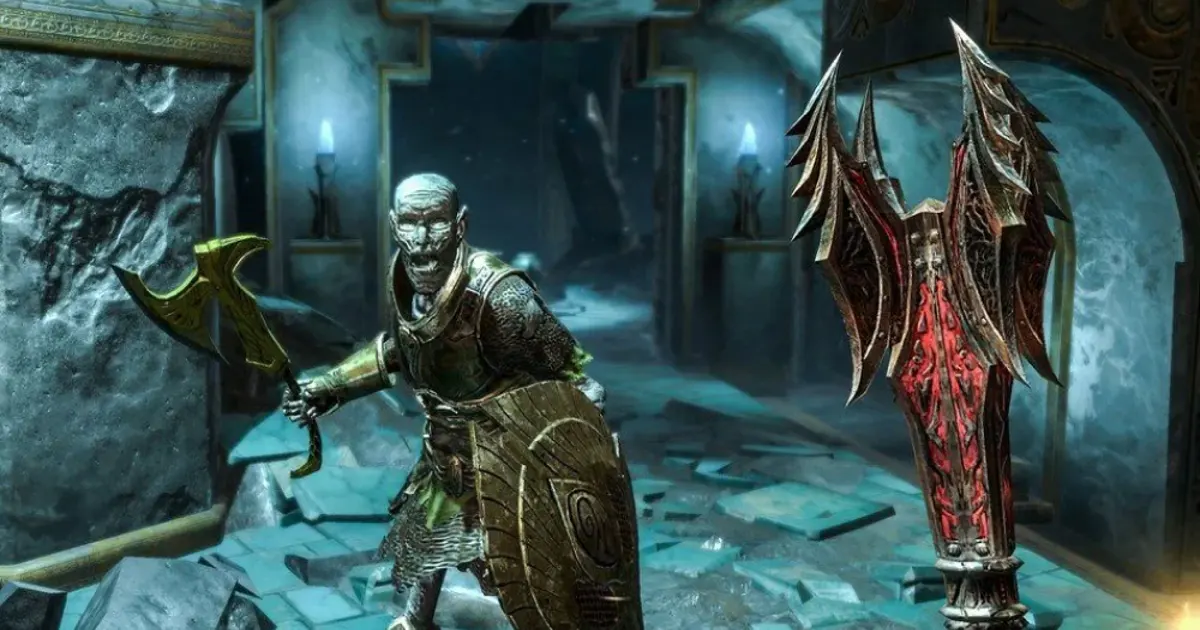
The Elder Scrolls: Blades (2019)
The Elder Scrolls: Blades is a mobile spin-off, announced at E3 2018 by Todd Howard as a "console-quality RPG for smartphones." It launched in early access on iOS/Android in March 2019, with a full release in 2020 (including Nintendo Switch). Blades is a streamlined single-player and partially multiplayer first-person RPG set after the Great War of the Fourth Era, just before Skyrim. The player-a former member of the Blades order in exile-returns to find their hometown destroyed and must complete quests while rebuilding the city, with city-building as a core mechanic.
Gameplay is tailored for mobile: tap and swipe controls (including one-handed portrait mode), short dungeon runs, PvP arena, and an endless procedurally generated abyss. Blades is free-to-play with in-app purchases, leading to criticism of aggressive monetization and grind. Visually, Blades was impressive for mobile, using adapted Skyrim assets. Reviews were mixed: praised for bringing TES's atmosphere to mobile, but criticized for repetitive quests and simplified combat. Despite this, millions of downloads demonstrated strong interest in mobile RPGs. The game continues to receive updates, but Bethesda's main focus shifted to Starfield and planning The Elder Scrolls VI.
Expectations and Facts About The Elder Scrolls VI
The Elder Scrolls VI is one of the most anticipated upcoming titles in the industry. Officially announced at E3 2018 with a short teaser showing a mountainous landscape and the series logo, expectations are sky-high after Skyrim's phenomenal success. Bethesda made it clear from the start that fans would need patience. As Todd Howard noted, "It's still very early to talk details-we've just begun." In 2018, the game was in pre-production; full development only started in 2023 after the release of sci-fi RPG Starfield. It's confirmed that Bethesda Game Studios, led by Howard, is developing TES VI using the new Creation Engine 2-the same platform as Starfield, with further enhancements planned for TES VI's graphics and systems.
Official information on TES VI remains scarce-no subtitle or exact setting has been revealed. However, hints from the 2018 teaser (arid plateaus, coastal mountains) have led fans to speculate that the setting is likely the western provinces of Tamriel-High Rock or Hammerfell (or both). The desert of Alik'r and distinctive mountain shapes seem to fit, and a 2021 Bethesda New Year post further teased "Hammerfell." The location has reportedly been decided for years, with "secret clues" hidden in the teaser. Storywise, fans expect a new, self-contained adventure, perhaps exploring unresolved themes like the fate of the Blades, Stormcloak-Imperial conflict, or new Daedric incursions. Howard has hinted that TES VI will be more "classic fantasy" in tone compared to Morrowind's surrealism.
Platforms and release date: After Microsoft acquired Bethesda's parent company ZeniMax, rumors swirled about Xbox exclusivity. Leaked Microsoft documents from an FTC trial indicate TES VI will release only on PC and Xbox, skipping PlayStation, with a tentative window of 2026 or later. Xbox head Phil Spencer stated in 2023 that release is still years away, with the team just beginning full-scale development. Realistically, fans expect TES VI between 2026-2028, considering the scale of modern AAA RPGs. As of late 2025, no gameplay trailers have been shown, and the game has not appeared at major events. Howard explained that the early announcement was to reassure fans, but warned it would be many years before more information is revealed. He urged patience, as Bethesda aims to realize all their ideas and technological ambitions before sharing the game with the public.
What do fans want from TES VI? Above all, a new, massive world with cutting-edge graphics and interactivity. Every TES game has raised the bar for open worlds, so expectations are for either several provinces or a richly detailed single region. Fans hope for the return of complex RPG mechanics-possibly with attributes or classes omitted in Skyrim-and improved NPC AI and dynamic economies, making cities and factions more reactive. Co-op is a widely requested feature; although TES has always been single-player, the success of ESO and mods like Skyrim Together show interest in multiplayer. While Bethesda hasn't confirmed co-op, they've teased "new possibilities" with Creation Engine 2. Modding support is expected to continue, as Howard confirmed the game is being designed with the modding community in mind-a key factor in TES's longevity.
In the absence of official details, rumors abound-ranging from the subtitle "Redfall" (used for a different game) to claims about Hammerfell and new quest systems. None are substantiated. Bethesda keeps development tightly under wraps, and as of 2025, all that's known is that TES VI is the studio's next big project after Starfield and will launch on current-generation platforms. Every year, fans hope for even a small teaser at The Game Awards or E3-it's been over seven years since the announcement.
In summary: Whenever it arrives, The Elder Scrolls VI is poised to be a landmark event in gaming. A whole generation of players discovered the series through Skyrim, and after a long hiatus, the sixth chapter promises a return to Tamriel with new technology and ideas. Stay tuned to official news-developers stress the game is "huge and demands time," but once Bethesda is ready, another legendary adventure awaits in the spirit of The Elder Scrolls. Until then, fans must be patient and trust it will be worth the wait-as Todd Howard said, "If you want details now, not in a few years, well... sorry." Each day brings us closer to returning to Tamriel, and the moment those familiar themes play and the words "The Elder Scrolls VI" appear on screen will be all the sweeter.